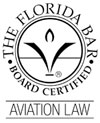July 1, 2014
WASHINGTON – The National Transportation Safety Board’s first investigative report into parasailing safety finds the activity is largely unregulated with serious accidents frequently caused by faulty equipment.
Because of the nature of an activity that often occurs in changing weather conditions with parasailers suspended 500 feet or more above the water’s surface, accidents often result in death or serious injury.
“An afternoon of parasailing can have tragic results if something as simple as a weak towline, strong winds, or a worn harness causes a serious accident,” said NTSB Acting Chairman Christopher A. Hart. “It is crucial that operators are competent and aware of all the risks associated with parasailing.”
The report cited eight accidents that occurred in Florida, Hawaii, North Carolina and the U.S. Virgin Islands that resulted in eight deaths and five injuries, including several in which individuals were dragged by an inflated parasail canopy across water and land and into obstacles.
During the course of its investigations, the NTSB identified a variety of safety concerns, including vessel operators who continued to operate in hazardous wind conditions, use of inadequate equipment or unserviceable gear, and towline strength that was in some cases compromised.
Although the safety of each of the estimated three to five million Americans who parasail in the United States and its territories each year is dependent on the skill and expertise of the master (parasail operator) and the acceptable condition of the equipment, there are no federal standards regarding training of operators or inspection of equipment.
The NTSB said that some safety risks could be mitigated if operators were required to have at least a “minimum level of experience and professional competence,” so it recommended that the United States Coast Guard implement a special license endorsement for parasail operators.
The following are three of eight investigations the NTSB conducted:
- Ocean Isle Beach, N.C., Aug. 28, 2009: Two women died after the towline broke in high winds and the canopy dragged the women through the water and into a pier.
- Pompano Beach, Fla., Aug. 16, 2012: A woman died after her harness separated from the flight bar, causing her to fall 450 feet into the ocean.
- Panama City Beach, Fla, July 1, 2013: Two female teenagers were seriously injured after the towline broke in high winds and the canopy struck a beachfront condominium.
Investigators also found that tying knots in the towline may significantly weaken the rope. The NTSB issued a new Safety Alert, “Towline Failure is the Leading Cause of Injury and Death in Parasailing Accidents.”
As a result of the investigation, the NTSB issued six safety recommendations to the Coast Guard, the Federal Aviation Administration, and the National Association of State Boating Law Administrators.
An executive summary and links to the full 33-page report and the safety alert are available at http://go.usa.gov/9SFF.

 July 1, 2014 in
July 1, 2014 in 


